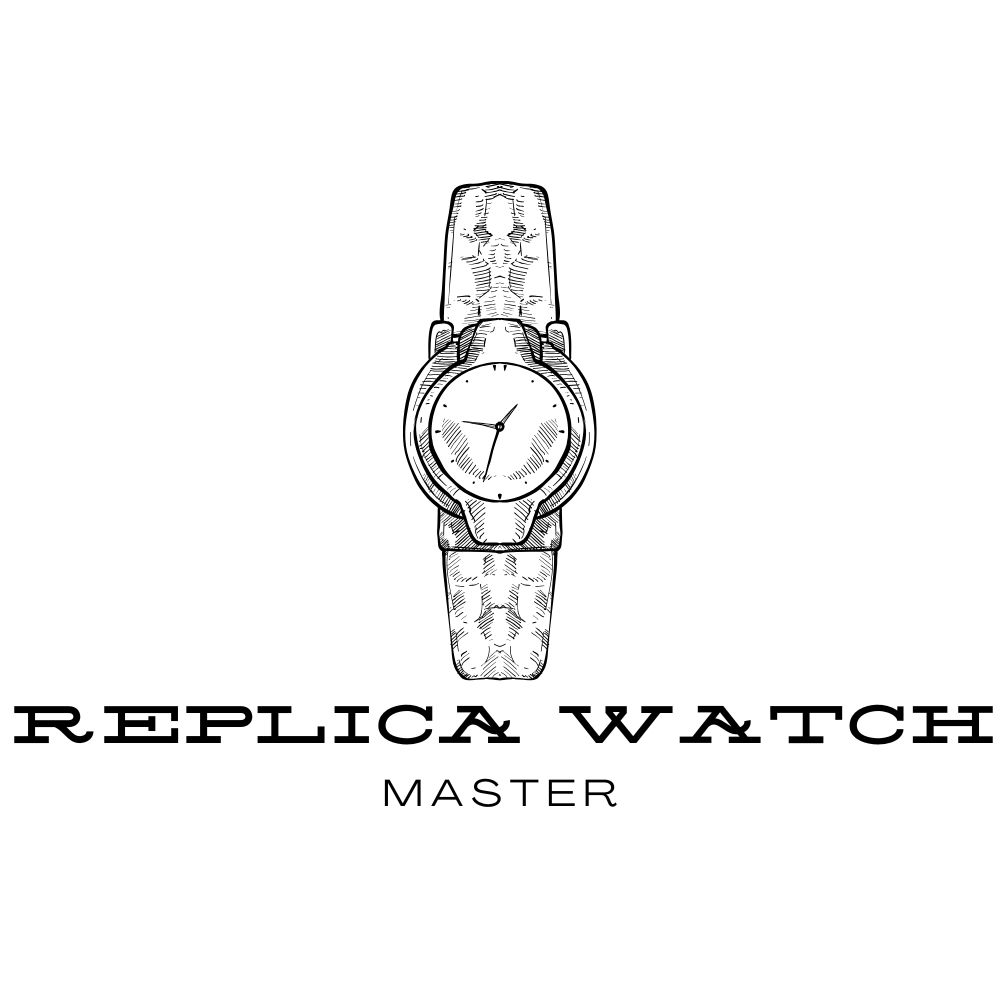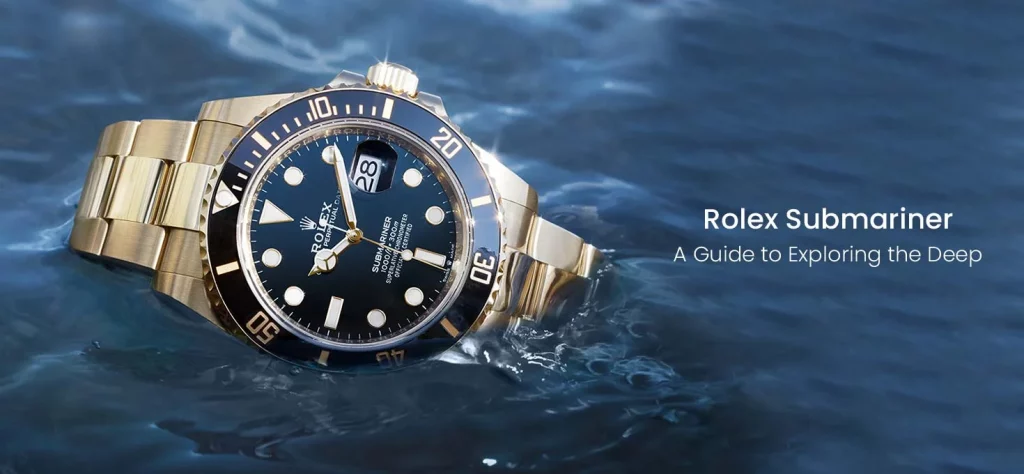Article
Rolex Submariner: The Journey From a Professional Dive Watch to a Timeless Icon of Prestige
In the world of luxury watches, the Rolex Submariner shines like a star, an icon not only of supreme craftsmanship but also of style and status. First launched in 1953, the Submariner is more than just a watch; it is a legend capable of conquering ocean depths while maintaining an elegant presence on its owner’s wrist. This article will take you back in time to explore the impressive developmental history of the Rolex Submariner, from a specialized tool for divers to a globally coveted masterpiece, while also explaining the strategic factors that have elevated Rolex to the “King” of the watch industry.
The Birth of a Legend (Early 1950s): The story of the Rolex Submariner began in the early 1950s when Rene-Paul Jeanneret, then a director at Rolex, envisioned a versatile sports watch suitable for underwater exploration yet elegant enough for formal events. With this vision, Rolex embarked on creating a timepiece with outstanding water resistance, high precision, and incredible durability.
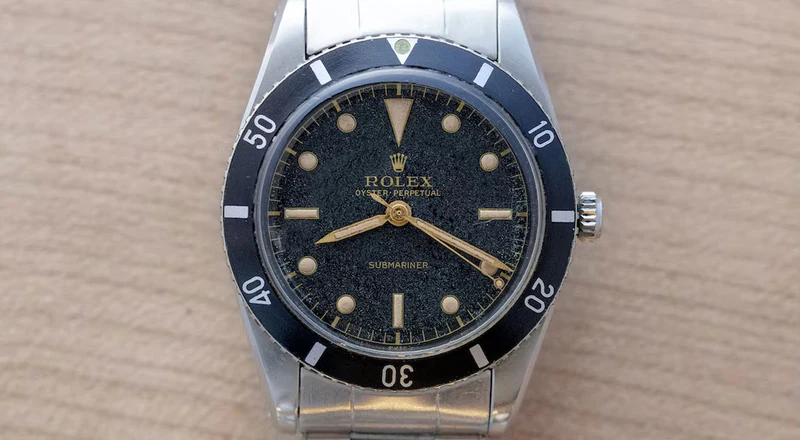 |
|
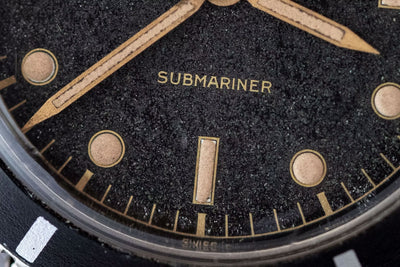 |
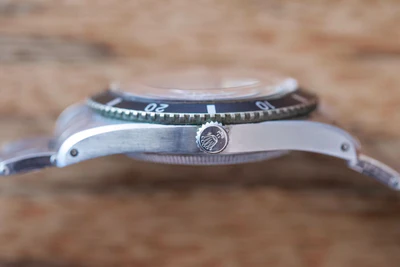 |
In 1954, at the Basel Watch Fair in Switzerland, the first Rolex Submariner (produced in 1953), Reference 6204, was officially introduced. This model immediately impressed with its modern design, unique rotating bezel, and was considered quite large for its time. Reference 6204 featured a significantly slimmer case than later models, a small 5.3mm crown, and an initial water resistance rating of 100 meters (though early advertisements claimed 200m). The simple “gilt” dial featured slender “pencil” hands and a seconds hand with a small “lollipop” detail. This was the first Submariner to bear the name “Submariner” on its dial.
Early Evolutions and Establishing its Position: Immediately after Reference 6204, Rolex continued to refine and improve the Submariner line. Reference 6205 (1954) appeared with two variations: a “clean dial” version (without the “Submariner” text, only the Rolex logo and “Oyster Perpetual”) and a version that already featured the iconic Mercedes hands, gradually shaping the familiar look of the Submariner.
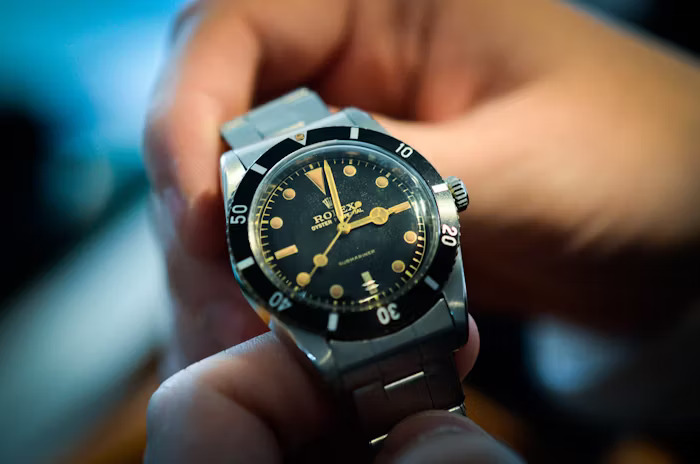
Notably, Reference 6200 (1955), dubbed the “King Sub” by collectors. Despite its lower reference number, it is believed to have been developed earlier but launched later. This model stood out with its large 8mm “big crown” engraved with “Brevet,” water resistance up to 200 meters, and was one of looted the first models to introduce the “Explorer” dial with 3-6-9 hour markers.
During this period, Rolex also introduced models such as Reference 6536 (1956) with a smaller crown and 100m water resistance, and Reference 6538 (also a “big crown”), famous for being James Bond’s (Sean Connery) watch in the movie “Dr. No” (1962). Ref. 6538 was the first Submariner to achieve Chronometer certification. Reference 5510 (1958) was the last “big crown” model, while Reference 5508 (1958) was the last Submariner without crown guards. The appearance of crown guards on Reference 5512 (1959) and later on Reference 5513 (1962) – one of the most famous Submariner references with the longest production run (until 1989) – enhanced the watch’s robustness and tool-like character.
The Submariner’s initial success stemmed not only from its design and features but also from Rolex’s strategy of continuous technical innovation. The foundation was the groundbreaking waterproof Oyster case (launched in 1926) and the automatic Perpetual winding mechanism (1931), which had already established Rolex’s reputation for durability and convenience.
The Decisive Turning Point: The Date Function and “Luxurification” (1960s – 1970s): In 1966, Rolex made a significant breakthrough by introducing Reference 1680, the first Submariner to feature a date function, known as the Submariner Date. This model had a date window at the 3 o’clock position, complete with the characteristic Cyclops magnifying lens. Some early versions of Ref. 1680 featured the “Submariner” text in red on the dial, making them highly prized collectibles nicknamed “Red Sub”.
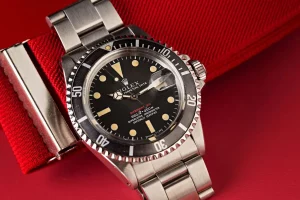
The introduction of Ref. 1680 marked the Submariner’s transition from a purely functional dive watch to a luxury sports watch. Rolex expanded the line with two-tone (steel and gold) and even solid 18k gold versions (Reference 1680/8 from 1970), attracting a broader customer base.
Modernization with New Technology (1970s – 1980s): In the late 1970s, Rolex continued to upgrade the Submariner with significant technological improvements. In 1979, Reference 16800 was launched, featuring a superior scratch-resistant sapphire crystal instead of the traditional acrylic. Water resistance was also increased to 300 meters. Inside, the new Caliber 3035 movement was equipped with a “quickset date” function, allowing the user to adjust the date independently of the time, significantly enhancing convenience.
By 1984, Reference 16803 introduced the first two-tone (steel and gold) Submariner of the modern era. An important transitional model was Reference 168000 (1988), which had a very short production run and used a new type of steel.
The Transition to the Modern Submariner Era: In 1988 (some sources say 1989), Reference 16610 was introduced, using the renowned Caliber 3135 for its accuracy and reliability. This model quickly became one of the most popular and longest-produced Submariners (until around 2010), featuring hour markers surrounded by white gold. Concurrently, Reference 14060 (launched around 1990) continued the no-date Submariner line with a modern movement. The two-tone Reference 16613 was also introduced around the same time.
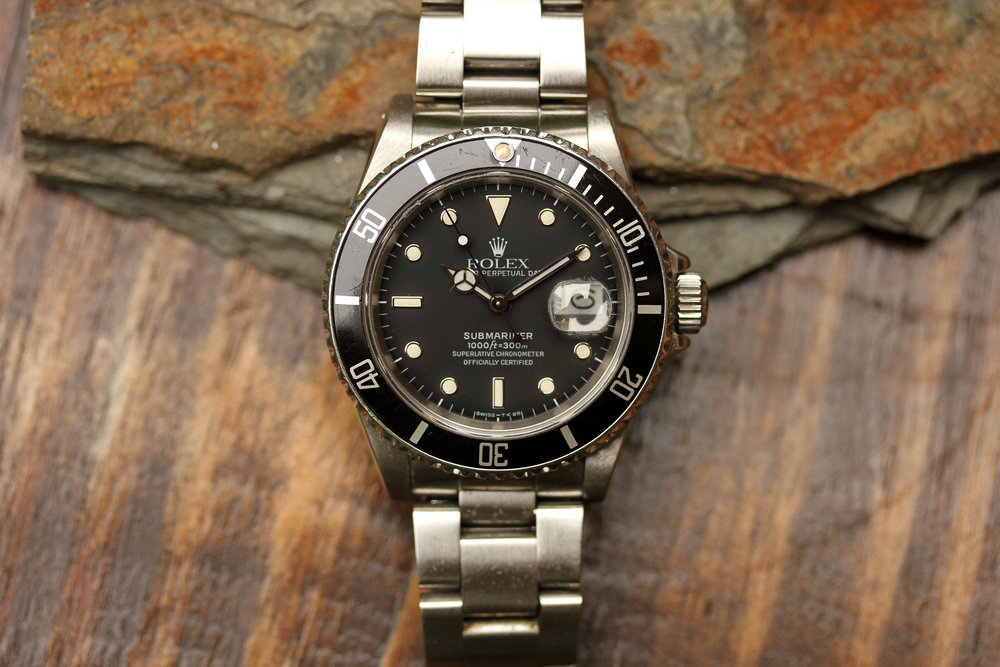
The 21st Century and New Icons: The Rolex Submariner continued to thrive in the 21st century, with special editions and continuous improvements:
- Reference 16610LV “Kermit” (2003): Launched for the Submariner’s 50th anniversary, featuring a green bezel and black dial. “LV” stands for “Lunette Verte” (Green Bezel).
- Reference 116619LB “Smurf” (2008): An 18k white gold version with a blue dial and bezel. “LB” stands for “Lunette Bleu” (Blue Bezel). After the “Kermit,” Rolex also launched Reference 116610LV “Hulk” with both a green bezel and dial.
- New Generation (2020): Rolex introduced a new Submariner line with a larger 41mm case size and a new movement. Notable models include Reference 124060 (no-date), Reference 126610LN (date, black bezel), and Reference 126610LV (green bezel, black dial – also known as “Starbucks” or the “new Cermit“).
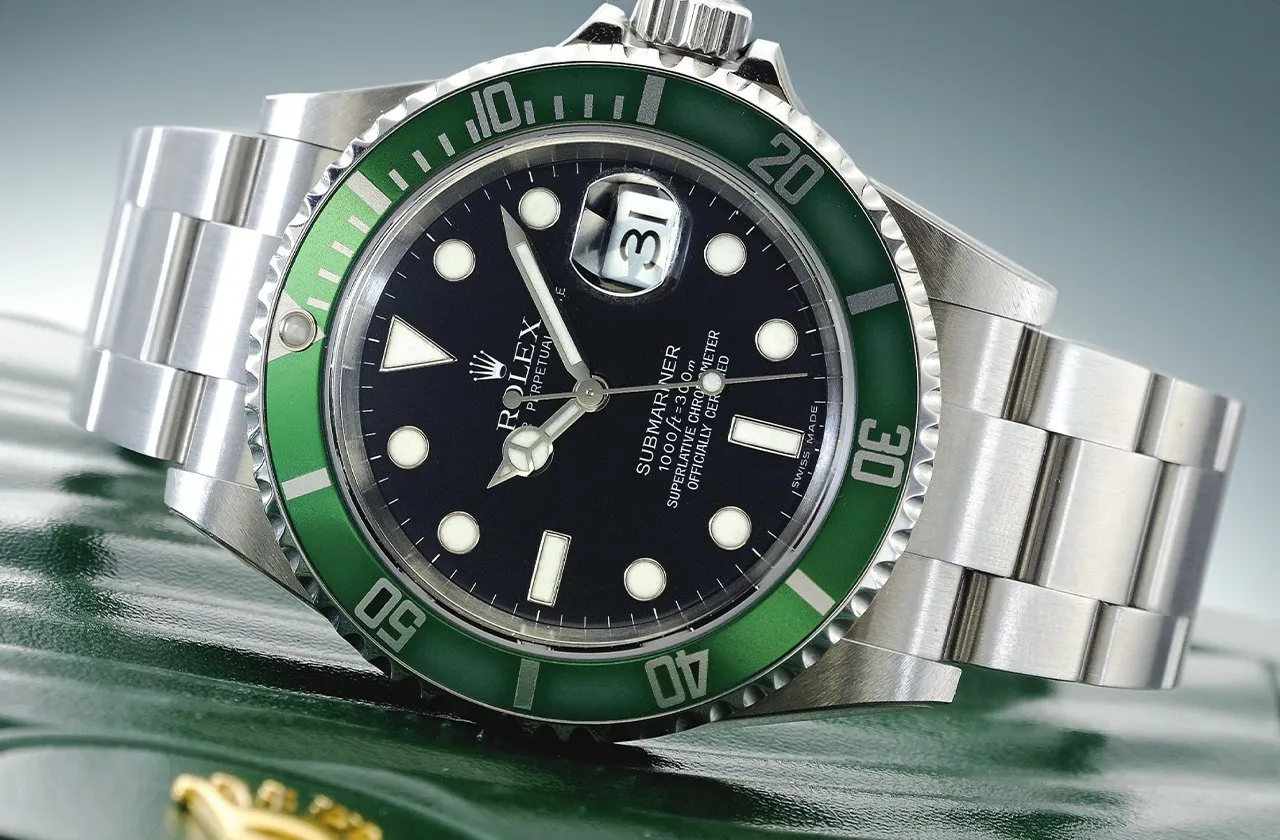 |
|
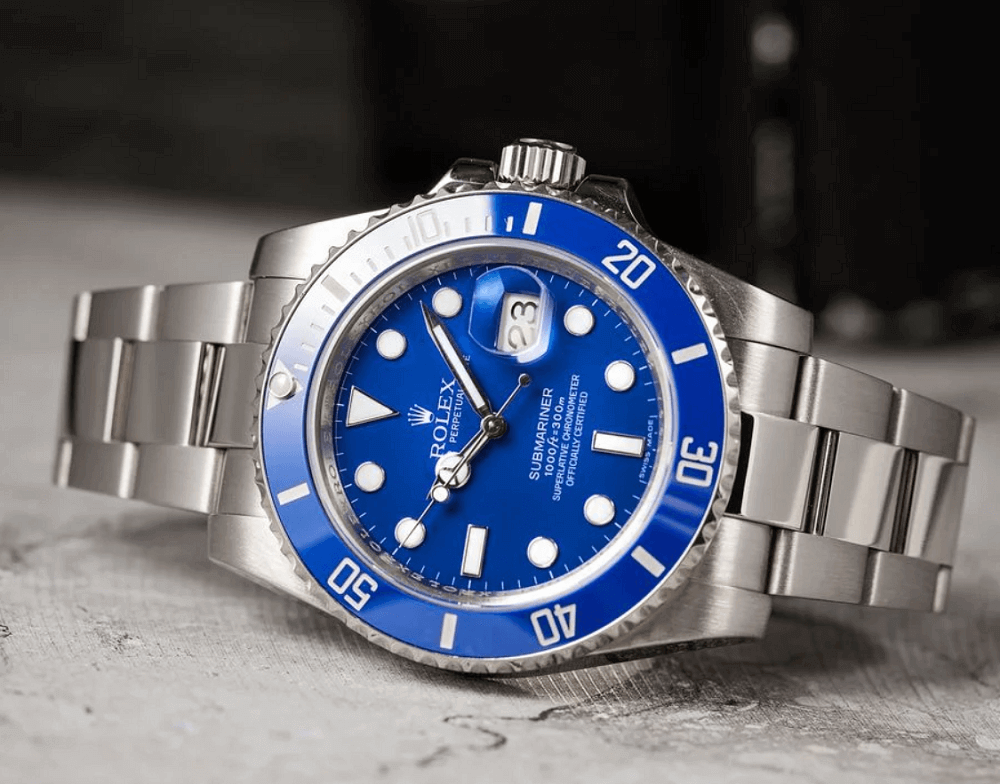 |
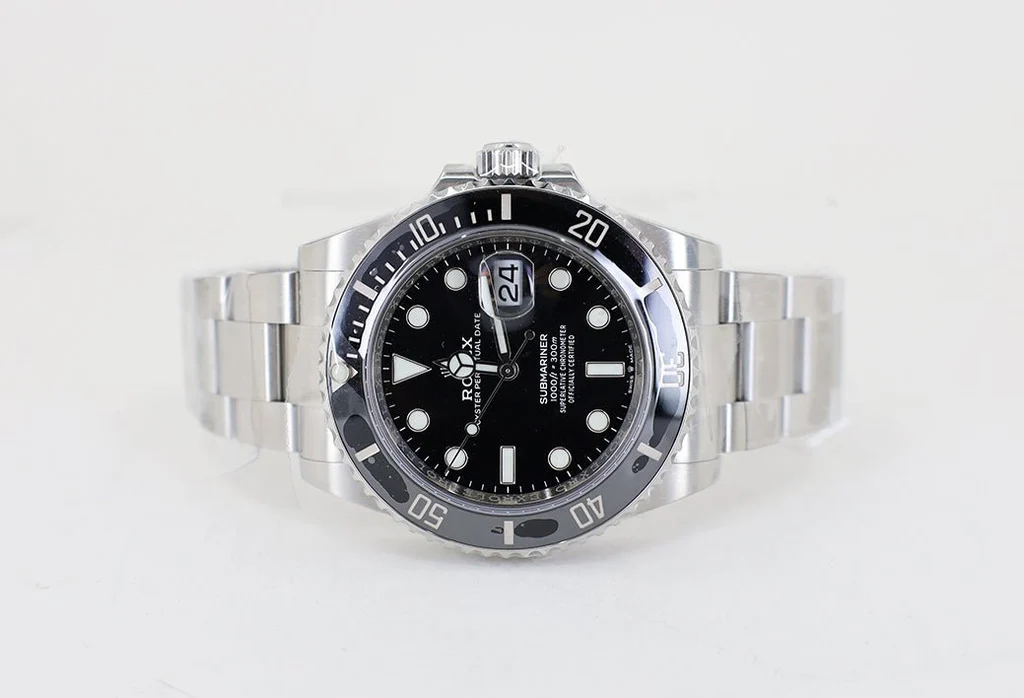 |
Behind the Timeless Success: Rolex’s Strategy The Submariner’s dominance is not only due to its design and quality but also the result of Rolex’s intelligent and consistent business strategies:
- Continuous Technical Innovation: From the Oyster case, Perpetual mechanism, to sapphire crystals and advanced Caliber movements, Rolex has always been a pioneer in applying technology to enhance performance and durability.
- World-Class Marketing: Hans Wilsdorf, the founder of Rolex, early on recognized the importance of associating the brand with extraordinary achievements. From Mercedes Gleitze wearing a Rolex Oyster while swimming the English Channel (1927), to the Submariner appearing with explorers and on James Bond’s wrist, Rolex has built an image of a brand linked to adventure, success, and prestige.
- Consistent Design: While many other brands change designs according to trends, Rolex, and particularly the Submariner, has only made incremental improvements, preserving the core aesthetic lines that have become iconic. This creates strong brand recognition and timeless value.
- Selective Scarcity and Market Value: Rolex is known for controlling supply, creating scarcity for its steel sports models, including the Submariner. This not only increases exclusivity but also drives up value on the secondary market. When first launched in the 1950s, a Submariner cost around $150 (equivalent to about $1,500 today). Currently, the retail price of a steel no-date Submariner (Ref. 124060) is around $8,100 and a date version (Ref. 126610LN) is around $9,150, but the actual market price is often significantly higher due to high demand and limited supply.
- Financial Independence and Long-Term Vision: Being owned by the Hans Wilsdorf Foundation, a non-profit organization, allows Rolex to focus on maintaining quality and sustainable development rather than chasing quarterly profits.
From a reliable tool for professional divers, the Rolex Submariner has undergone an impressive evolutionary journey to become one of the most coveted watches in the world. The combination of iconic design, superior craftsmanship, continuous improvements, and smart branding strategies has solidified the Submariner’s position as an immortal legend in the watch industry. Today, the Submariner is not just an accurate timekeeping machine but also a statement of style, achievement, and a passion for enduring values.

